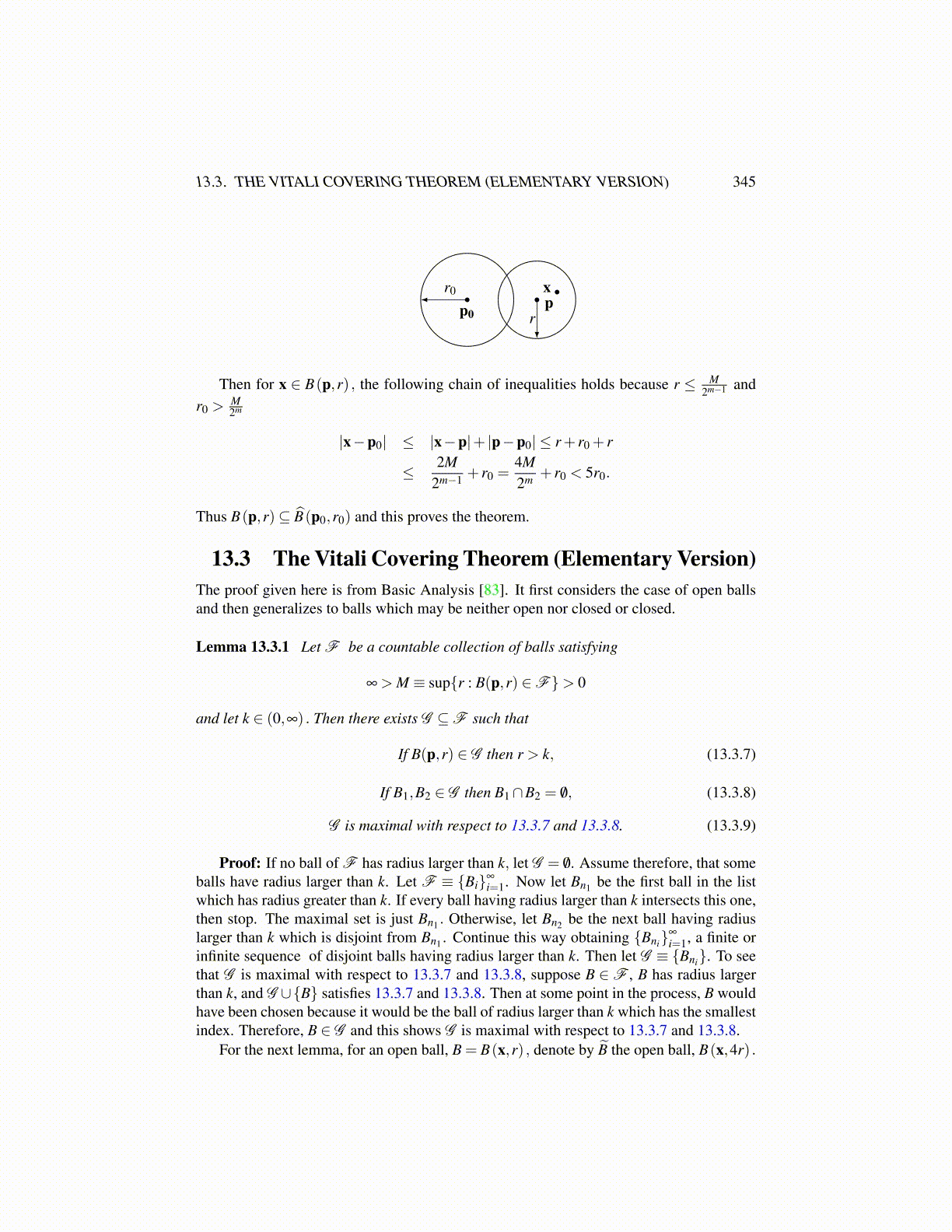
13.3. THE VITALI COVERING THEOREM (ELEMENTARY VERSION) 345
r0
p0 rpx
Then for x ∈ B(p,r) , the following chain of inequalities holds because r ≤ M2m−1 and
r0 >M2m
|x−p0| ≤ |x−p|+ |p−p0| ≤ r+ r0 + r
≤ 2M2m−1 + r0 =
4M2m + r0 < 5r0.
Thus B(p,r)⊆ B̂(p0,r0) and this proves the theorem.
13.3 The Vitali Covering Theorem (Elementary Version)The proof given here is from Basic Analysis [83]. It first considers the case of open ballsand then generalizes to balls which may be neither open nor closed or closed.
Lemma 13.3.1 Let F be a countable collection of balls satisfying
∞ > M ≡ sup{r : B(p,r) ∈F}> 0
and let k ∈ (0,∞) . Then there exists G ⊆F such that
If B(p,r) ∈ G then r > k, (13.3.7)
If B1,B2 ∈ G then B1∩B2 = /0, (13.3.8)
G is maximal with respect to 13.3.7 and 13.3.8. (13.3.9)
Proof: If no ball of F has radius larger than k, let G = /0. Assume therefore, that someballs have radius larger than k. Let F ≡ {Bi}∞
i=1. Now let Bn1 be the first ball in the listwhich has radius greater than k. If every ball having radius larger than k intersects this one,then stop. The maximal set is just Bn1 . Otherwise, let Bn2 be the next ball having radiuslarger than k which is disjoint from Bn1 . Continue this way obtaining {Bni}
∞
i=1, a finite orinfinite sequence of disjoint balls having radius larger than k. Then let G ≡ {Bni}. To seethat G is maximal with respect to 13.3.7 and 13.3.8, suppose B ∈F , B has radius largerthan k, and G ∪{B} satisfies 13.3.7 and 13.3.8. Then at some point in the process, B wouldhave been chosen because it would be the ball of radius larger than k which has the smallestindex. Therefore, B ∈ G and this shows G is maximal with respect to 13.3.7 and 13.3.8.
For the next lemma, for an open ball, B = B(x,r) , denote by B̃ the open ball, B(x,4r) .